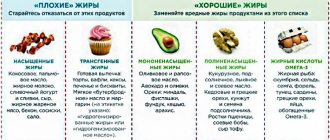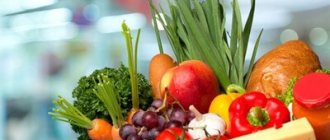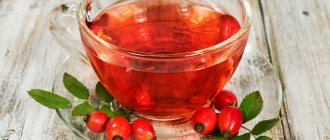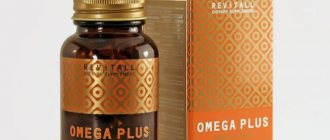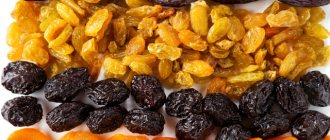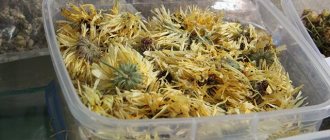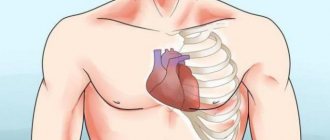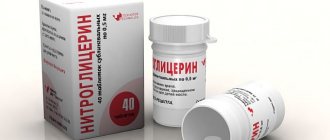“Space diet” by Sergei Sivokho: without denying himself anything, the comedian lost 42 kg in 3 months
It so happened that stress and various kinds of experiences have become a kind of norm in the life of every average person.
Of course, such “obsession with trifles” leads to disorders of the nervous system, which include: irritability, hormonal imbalance and, in fact, disruption of the cardiovascular system.
Application and purpose of the diet
The cycle of diet therapy programs for various diseases of the heart and blood vessels is called “table No. 10”. This diet is also applicable in the nutrition of patients with degrees I and IIa of circulatory failure. The use of table No. 10, together with drug therapy, in such patients can improve the course of the underlying disease and reduce the risk of complications. However, this diet is only suitable for compensated or subcompensated disease and should be used only when prescribed by a doctor.
Content:
- Application and purpose of the diet
- Nutrition rules
- List of foods for diet
- Menu for diet
- Diet No. 10a
- Diet No. 10b
- Diet No. 10c
- Finally
The diet is aimed at restoring normal heart function and normalizing blood circulation. Also, diet No. 10 improves liver and kidney function, helps reduce swelling and shortness of breath, and helps reduce body weight if the patient has concomitant excess weight or obesity. Such results are achieved by following all the nutritional requirements of table No. 10, which are primarily aimed at facilitating the functioning of the gastrointestinal tract and cardiovascular system.
Reasons for appointment
Unhealthy food accelerates the process of wear and tear of the body, provokes the occurrence of diseases, and disrupts the ratio of incoming nutrients. As a result, diseases appear and progress. A proper diet will eliminate the mechanism of disorders at the cellular level and enhance the positive effects of medications. If the doctor has prescribed a special diet, the speed of the patient’s recovery depends on its compliance. Indications for diet No. 10 for cardiac patients. List:
- congenital and acquired heart defects;
- progressive cardiosclerosis;
- hypertension with circulatory disorders.
Moderate restriction of salt and fat, as well as a decrease in the load on the excretory organs, make this nutritional plan suitable for the treatment of other diseases. In particular, of autoimmune origin.
Nutrition rules
A poor diet is often a risk factor for heart disease. Eating food rich in cholesterol, “fast” carbohydrates, as well as fried semi-finished foods leads to pathological changes in all organs and systems of the human body, primarily the cardiovascular system. A proper diet should become an integral part of treatment for cardiovascular diseases.
Diet No. 10 according to Pevzner is considered a complete, balanced diet with a reduced calorie content. A decrease in energy value occurs due to the exclusion of fatty, fried, and sweet foods. It is imperative to reduce salt intake as much as possible; with the doctor’s permission, the patient is allowed approximately 5 g of sodium chloride.
A large amount of water is undesirable, since excess liquid puts a strain on the digestive organs, liver and kidneys. 1.5 free fluids per day are prescribed. Considering the fact of a limited drinking regime, you need to reduce the number of first courses and drinks.
Tonic drinks are not allowed because they have a stimulating effect on the central nervous system and heart. These include coffee, energy drinks, green tea, and ginger.
Vegetables and fruits can be consumed in moderation. Consuming plant fiber in large quantities puts extra strain on the gastrointestinal tract. Up to three small vegetable servings per day. Food must not be baked or fried. You can use all other types of cooking: steamed, stewed, in a slow cooker, boiled, grilled. It is recommended to pre-boil the meat before eating.
When eating on table No. 10, equal intervals between meals are maintained, portions are reduced in order to reduce the load on the digestive tract and cardiovascular system.
Responsibility on the part of the patient is very important. During the treatment period, it is extremely undesirable to indulge in “delicious” foods and overeat, as this can prolong the period of therapy and worsen your overall well-being.
The influence of medical nutrition on the course of pathology
The main purpose of using treatment table No. 10 is to normalize coronary and peripheral blood flow. This will provide adequate nutrition to all tissues of the body, accelerate the attenuation of inflammatory processes, and bring closer the cure of the disease or its transition into remission.
Also, the tenth table is designed to normalize metabolism and prevent disturbances in it, which will protect against the occurrence of concomitant diseases and metabolic disorders. In addition, each diet option must provide the patient’s body with the necessary nutrients and energy for normal functioning.
To “unload” the body, the diet involves reducing the daily volume of liquid and salt. The result of introducing such restrictions:
- pressure stabilization;
- preventing jumps in the tone of vascular walls;
- reducing the load on the kidneys;
- optimization of blood volume;
- normalizing electrolyte balance;
- elimination of edema;
- improvement of the nervous system.
The specific goals of assigning subtypes of the tenth table are achieved through the following features.
- No. 10a. Relieves the heart by reducing the amount of salt and water, sharply limiting the intake of extractive substances with food.
- No. 10b. By correcting the amount of protein consumed, it reduces the reactivity of the immune system and reduces the activity of inflammation.
- No. 10с. Fights atherosclerosis by regulating lipid metabolism and removing excess cholesterol.
- No. 10r. It spares the body as much as possible, but preserves the nutritional value of the food consumed by the patient, this helps to attenuate inflammation.
- No. 10 Corrects blood pressure levels by limiting or introducing certain vitamins and minerals into the diet.
- No. 10i. Accelerates the body's recovery after a heart attack, but implies a reduction in caloric intake.
The norm for salt consumption on the tenth diet is no more than 2 g per day. This amount already enters the body along with “clean”, unsalted food. But if there is no tendency to edema, the patient is allowed to add up to 5 g of salt to dishes at his own discretion.
Excessive amounts of sodium chloride in the diet provokes edema, fluid retention, an increase in the volume of the bloodstream and a persistent increase in blood pressure. All of the above conditions are unacceptable on the path to recovery from heart pathologies.
List of foods for diet
In terms of chemical composition, nutrition should be complete and balanced. The daily calorie intake during the treatment program should be within the normal range, approximately 2500 kcal.
The menu should consist of easy-to-digest food and natural ingredients. The main diet consists of:
- lean types of meat: trimmed veal, pork without veins and fascia, beef, chicken and turkey without skin, rabbit fillet;
- lean fish, suitable: flounder, hake, carp, pike perch, perch, eel, etc.;
- seafood, seaweed;
- salt-free bread, wheat bread of the first and second grind (up to 150 g per day) in dried form, day-old baked goods, pasta;
- boiled and steamed eggs, up to 5 pieces per week are allowed;
- dairy products, cottage cheese, low-fat unsalted cheese, milk (with doctor's permission);
- cereals, semolina – limited;
- vegetables (except prohibited ones), green peas and white cabbage should be limited;
- fruits and berries, nuts, dried fruits.
Cereals can be cooked in milk or water, combined with boiled fish or meat, and added to soups. It is not forbidden to boil pasta from durum wheat in moderate quantities (ready-made, it is permissible to use a serving of 1/2 cup), or from wheat or buckwheat flour. It is recommended to consume first courses when the portion is reduced to 150-200 g at a time; vegetables for soup should not be fried.
You need to exclude from your diet:
- lamb, meat with fat, duck, goose, offal;
- fatty fish, salted and smoked fish, caviar;
- canned food, pickles and marinades;
- any store-bought sauces;
- fatty and salty cheese;
- confectionery, chocolate, baked goods;
- legumes;
- mushrooms, radishes, sorrel and spinach;
- tonic drinks, sweet soda, cocoa;
- fresh baked goods;
- garlic and onions.
When preparing food, you should not forget that you cannot add salt. Garden greens and natural herbs are allowed. It is also better to exclude spicy and bright-tasting spices, as they stimulate the appetite.
Recipes
The basic principle by which recipes for diet number 10 are selected is to use approved foods and dietary cooking methods (baking, stewing, boiling) in order to preserve vitamins and minerals.
Rice soup with zucchini
To prepare the soup, you need to take rice (half a glass), zucchini (2 small ones weighing 600-700 grams), vegetable oil (1-2 tbsp), herbs (dill, parsley), seasonings, rye or wheat croutons ( 150-200 g), vinegar to taste.
Rinse the rice and cook in two liters of water for 10 minutes. During this time, wash and peel the zucchini, cut into cubes and fry for 5-7 minutes, adding pepper and salt.
Then the zucchini is added to the soup, cooked for another 10 minutes, and then pureed using a blender. If necessary, you can season the soup with half a teaspoon of vinegar and serve with herbs and croutons.
Pike perch soufflé
To prepare the souffle you will need pike perch fillet (800 g), low-fat milk (100 g), butter (50 g), flour (1 tbsp), eggs (2 pcs.).
First you should prepare the milk sauce: fry the flour in a dry frying pan until golden brown (1-2 minutes), and then pour in the milk in a thin stream and stir until smooth. At the end of cooking, add oil, and when the sauce thickens, remove the pan from the heat.
The fish fillets are washed and cut into pieces, then twisted in a meat grinder or crushed using a blender. The resulting minced meat is mixed with yolks, milk sauce and beaten until fluffy.
Separately, beat the whites until stiff foam and mix with the minced meat, which should then be placed in molds, taking into account that the soufflé will grow during the cooking process. The dish is baked for about 30 minutes at a temperature of 180 degrees, served hot along with a green salad.
Potato roll with minced meat
Necessary products: chicken, pork or any other minced meat (0.5 kg), potatoes (1 kg), eggs (2 pcs.), flour (3 tbsp), seasonings, onion, unsalted cheese (200 g).
The potatoes are washed, peeled and boiled until tender, then minced in a meat grinder or grated on a fine grater. Add 2 tablespoons of flour and 1 egg to the potatoes, knead and spread the dough evenly on cling film.
Add an egg, chopped onion, and pepper to the minced meat, mix thoroughly and spread on the potatoes. Then, using cling film, the potatoes are rolled into a roll, which is placed on a greased baking sheet. Brush the top of the roll with yolk and sprinkle with grated cheese.
Bake the roll in a preheated oven at 180 degrees for 20-30 minutes.
Baked zucchini
To prepare the dish, you need to use 2-3 small zucchini, hard cheese (150 g), garlic (2 cloves), olive oil, black pepper, paprika powder, Italian herbs and herbs.
The zucchini is washed and cut into long slices, which are placed on a baking sheet lined with baking paper or foil and greased with oil. Then prepare the dressing: grate the cheese, add garlic passed through a press and seasonings. Sprinkle the zucchini with dressing and bake for 15 minutes (200 degrees) until golden brown.
The dish is served warm. Zucchini can be sprinkled with finely chopped herbs. Vegetables can also be eaten with sour cream or tomato sauce.
Dietary meat pate
For the pate you will need beef (200 g), potatoes (400 g), medium carrots, milk (half a glass), butter (1 tbsp).
Boil the beef until done. Carrots and potatoes are boiled in their skins, then cooled and peeled. The prepared ingredients are minced through a meat grinder, then placed in a frying pan with a thick bottom, milk is added and simmered for 5 minutes. The hot pate is seasoned with oil and mixed thoroughly.
The pate is served with vegetables, and is also eaten with rye bread, like a sandwich.
Menu for diet
It is important to ensure that the body is saturated with useful components and nutrients. A day you need to eat two to three servings of carbohydrate dishes (with a predominance of complex ones), two servings of protein foods, snacks with plant fiber (vegetables, berries, fruits) are allowed. Periodically you need to eat nuts and drink fermented milk drinks to avoid potassium deficiency. This macronutrient is extremely important for the heart; a potassium diet is often prescribed to prevent its deficiency.
It is better to write the diet on a piece of paper and place it in a visible place; it is advisable to eat at the same time. You can create a sample menu for the week in advance so that you don’t have to come up with dietary decisions on the fly.
First day
In the morning: pureed buckwheat with milk, a little dried apricots, herbal decoction.
Snack: peeled grated apple with carrots.
Lunch: steamed fish cutlets, mashed potatoes, unsweetened berry juice.
Afternoon snack: milk.
Dinner: stuffed peppers, tomato juice.
Second day
In the morning: cereal flakes with pieces of peeled pear, weak black tea.
Snack: kiwi puree.
Lunch: vegetable soup with pearl barley, toasted bread.
For an afternoon snack: a little cottage cheese, one tomato.
Dinner: vinaigrette without onions and beans, a piece of boiled beef, a glass of natural juice.
The third day
In the morning: one boiled egg in a bag, cucumber and tomato salad, linden tea.
Snack: unsweetened yogurt.
Lunch: boiled millet porridge with pieces of boiled veal, squash caviar.
For an afternoon snack: some nuts, rose hip decoction.
Dinner: baked fish, boiled cauliflower.
Fourth day
In the morning: liquid semolina porridge, a little honey or jam, unsweetened tea.
Snack: dried bread with cottage cheese.
Lunch: vegetarian beetroot soup, baked potatoes, fresh cucumber.
For afternoon snack: homemade oatmeal cookies, milk tea.
Dinner: stewed eggplant with rabbit meat, carrot juice.
Fifth day
In the morning: barley porridge, Greek salad without onions.
Snack: a glass of kefir, some berries.
Lunch: vegetarian borscht, broccoli puree, milk jelly.
For an afternoon snack: berry jelly, chamomile infusion.
Dinner: cottage cheese casserole, boiled beet and prune salad.
Sixth day
In the morning: pureed rice porridge, pieces of kiwi, tea with milk.
Snack: yesterday's rye bread, avocado slices and tomato.
Lunch: boiled beef stroganoff, side dish of boiled potatoes.
For an afternoon snack: a glass of fresh carrot and apple juice, walnuts.
Dinner: boiled squid fillet, green beans, milk.
Seventh day
In the morning: oatmeal with milk and honey, linden tea.
Snack: grated carrots with raisins, topped with a spoonful of unsweetened yogurt.
Lunch: fish stewed in tomato juice, boiled mashed rice.
For an afternoon snack: stewed pumpkin with flax and sunflower seeds.
Dinner: baked rabbit with prunes, a glass of fresh apple juice.
If you are intolerant to whole cow's milk, replace it with coconut, soy or almond milk.
You cannot starve on a diet; nutrition must fully satisfy the body's needs. Do not forget about counting the fluid; small deviations from the norm are not terrible, but for a speedy recovery it is better to follow the rules exactly.
Diet No. 10 for hypertension and other diseases can last as long as necessary to restore the patient’s health. Only a doctor can determine the exact duration of the program; as a rule, this technique is prescribed for several months or more.
What is diet number 10 for hypertension
There is a close relationship between nutrition and the patient’s well-being, using which it is possible to fight the disease more effectively. Diet number 10 shows good results for hypertension.
Diet number 10 is often prescribed to patients suffering from heart defects, cardiosclerosis and hypertension. This diet creates favorable conditions for blood circulation and fully satisfies the body's needs for nutrients and energy.
Diet number 10 is a complete diet that limits the intake of liquid and table salt, as well as drinks and substances that stimulate the activity of the cardiovascular system and the central nervous system. Diet number 10 is the best diet for hypertension.
Diet number 10 for hypertension - menu and recipes
Diet number 10 for hypertension involves preparing food without salt; salt can be added during meals. Diet number 10 allows you to consume the following foods:
- wheat bread made from 1-2 grade flour, doctor's and rye bread, biscuits, baked goods without salt;
- cabbage soup, beetroot soup, borscht, vegetarian soups with cereals and potatoes, milk and fruit soups;
- various types of lean meats, fish and poultry, mussels, seaweed, low-fat cottage cheese and dishes made from it, low-fat milk and fermented milk products. Lightly salted low-fat cheese, sour cream (in dishes);
- protein omelettes and soft-boiled eggs (2-3 pieces per week);
- buckwheat and oatmeal, millet in the form of porridges and casseroles. Semolina, rice and pasta should be limited;
- cabbage of all types, zucchini, carrots, eggplants, pumpkin, potatoes, green peas in the form of puree. It is allowed to add greens to dishes;
- salads and vinaigrettes with vegetable oil, seaweed. Soaked herring, boiled jellied fish and meat, low-fat boiled sausage, sweet fruit salads, ham;
- ripe berries and raw fruits, compotes, dried fruits, jellies, semi-sweet mousses;
- limit: sugar, jam, honey;
- weak tea with lemon or milk, natural weak coffee or coffee drink, rosehip and wheat bran decoction, vegetable, fruit and berry juices;
- You can use a small amount of butter and vegetable oil for cooking.
Diet number 10 for hypertension excludes from the diet products made from puff pastry and butter dough, fatty meat and fish broths (as well as simply fatty fish and meats, such as goose, duck). You should exclude all types of canned food and smoked foods, salty and fatty cheese, radishes, radishes, spinach, sorrel, chocolate, mushrooms, ice cream, cream products, mustard, strong coffee, tea and cocoa, alcohol, as well as animal and cooking fats.
Diet No. 10a
If the patient is diagnosed with IIb or III degree of circulatory failure, diet No. 10a is used. In this case, diet therapy becomes as gentle as possible on the functioning of the digestive organs and cardiovascular system, because this condition is considered decompensated.
The list of products remains similar to the tenth diet. The patient is prohibited from eating fatty, canned, fried, baked goods and confectionery products, hot spices and salt, and meat by-products. Alcohol, soda, energy drinks, coffee and green tea should be completely excluded. Vegetables and fruits with coarse fiber and skin are limited.
It is advisable to wipe the cereals; they can be boiled with milk or water. Soups should be made with low-fat broth; it is advisable to cook them with vegetables or lean fish. It is recommended to reduce the amount of dried bread to 150 g. The daily calorie intake is reduced to 2000 kcal.
You should drink no more than a liter of water per day. Fluid restriction is caused by impaired functioning of the kidneys and liver in these stages of the disease. Diet number 10a lasts until the patient’s well-being improves and the disease regresses. Often table 10a goes into diet ten.
... and what cardiologists do not recommend to eat
The excluded foods for diet No. 10 (table No. 10) are everything that the modern world considers harmful: pickles and marinades, smoked foods, snacks with food additives, industrially produced desserts containing trans fats. But you cannot eat some “healthy” foods for other diets on diet No. 10. The reason for this is the content of extractive substances that can irritate the mucous membranes of the stomach and intestines, as well as the kidneys and liver. The list of harmful products is presented in the table.
Table - Prohibited foods for heart patients
| Relative contraindication | Absolute contraindication |
| - Beans; - beans; - green pea; - radish; - radish; - spinach; - sorrel | - Smoked sausage; - smoked and salted fish; - chocolate; - cookie; - spices; - fibrous meat; - fat meat; - baked goods; - fresh bread |
These bans are not forever. As the patient’s condition improves, they are transferred to other types of diets that are more adapted to the patient’s eating habits. If the outcome is favorable, the patient will be recommended diet No. 15, contraindications of which include fast food and refractory fat.
Diet No. 10b
Table No. 10 is often prescribed to patients after a myocardial infarction, as well as in the presence of rheumatic heart disease without circulatory failure. Compared to other diet options, diet No. 10 is broader and the drinking regime is not as strict. It is important for the patient to increase foods high in potassium and magnesium in their diet: nuts, cereals, milk. The menu must include protein foods, with a predominance of animal protein.
After a heart attack, the diet is prescribed in several stages. The diet consists of three phases, which are prescribed alternately:
- First phase. Lasts during the first week after myocardial infarction. The energy value is reduced to 1200 kcal; the patient is required to eat approximately 1.5 kg of food and 0.8 liters of liquid per day. Dishes are prepared in pureed, crushed form, and the food is taken warm. Salt is not used at all, you can periodically eat crackers from rye bread, fresh vegetables are prohibited.
- Second phase. It lasts for 2-3 weeks and is called the subacute period. Daily calorie content increases to 1800 kcal, liquids can be consumed in a volume of 1 liter. Up to 3 g of sodium chloride is allowed. You can introduce fresh vegetables, increase the amount of protein foods and healthy polyunsaturated fats.
- The third phase begins in the fourth week after the heart attack, during which scarring occurs. The menu at this stage will be complete, the amount of food should increase to 2.2 kg, and water - 1.1 liters. The permissible salt intake is 6 g per day. The list of products is typical for table number 10.
During the rehabilitation period after myocardial infarction, it is important to eat food low in salt; the main amount of sodium chloride will contain bread. It is important to adhere to this rule, because salt tends to retain fluid in the body and lead to edema, thereby further impairing the functioning of the damaged heart muscle. Meat and fish must be boiled before other types of cooking. It is allowed to fry foods in a small amount of vegetable oil. Porridges should be boiled and pureed. Vegetables can be eaten cooked or raw.
After the fourth week from the onset of the disease, the volume of fluid increases to 1.5 liters; all drinks and first courses must be taken into account. The daily calorie intake should be 2500 kcal; if your lifestyle is sedentary, this figure should drop to 2200 kcal.
During treatment, the patient should be periodically observed by the attending physician to adjust the menu.
Energy value, calorie content, calculation of BZHU
The calorie content of the generalized form of table No. 10 is 2800 kcal. This is an average figure for a person with reduced physical activity and moderate mental stress, as happens with heart pathologies. General prohibitions look like this:
- irritants of the nervous system - coffee, strong tea, energy drinks;
- irritants of the excretory organs - chocolate, hot spices;
- vascular tone stimulants - nicotine, alcohol;
- liquid - limit to 1.5 liters per day and a minimum of salt;
- fried food - and fatty.
Not only the quality and quantity of food affect your health, but also the way you eat it. The principle of operation of the tenth diet: moderate and stable supply of nutrients to the body. This ensures a reduction in the load on it. Rules for eating on diet No. 10:
- fractional diet - up to six meals per day in small portions;
- equal intervals between meals - preferably every two to three hours;
- reduced dinner size - last snack no later than two hours before bedtime.
Along with food, the patient’s body should receive:
- 90 g of protein - more than half - of animal origin;
- 70 g of fat - a third is vegetable fats;
- 400 g of carbohydrates - mostly complex.
Saturating the diet with coarse dietary fiber ensures normal digestion and intestinal motility, and also cleanses the blood of excess sugar and cholesterol. As part of the diet, raw vegetables serve as sources of fiber.
The differences in the nutritional plan according to the specific options of the tenth table are as follows.
- No. 10a. Reduced caloric content of the diet (2000 kcal) due to changes in the ratio of BJU. Protein intake is 70 g, fat - 70 g, and carbohydrates - about 300 g.
- No. 10b. Moderately reduced energy value of the daily diet to 2600 kcal. Increased amount of proteins (120 g), fats (100 g). Carbohydrates remain at 300g.
- No. 10с. Calorie content 2100 kcal. The energy value is reduced due to carbohydrates (300 g), while the norm of proteins and fats is maintained. Regarding the latter, changes are introduced - plant-based ones predominate.
- No. 10r. When the energy value of the diet is 2100 kcal, the amount of carbohydrates (250 g) and fats (60-70 g) is minimized. Proteins are consumed within the physiological norm. Sparing the body occurs by eliminating mechanical and chemical irritants. Only neutral warm food is consumed, preferably in grated form.
- No. 10 It involves consuming a normal amount of proteins and carbohydrates, with a reduced amount of fat. The vitamin and mineral value of the diet increases. A huge role is given to the consumption of vegetables and seafood.
- No. 10i. The post-infarction state requires a small amount of food with a total energy value of about 1200 kcal. Nutrient distribution follows a 60/30/120 pattern. All food is ground and semi-liquid. Gas stimulants are excluded from the diet. The average duration of the diet is ten days.
According to doctors, for each option of the tenth table, one standard list of products is suitable. Only the volume of portions and the saturation of each of them with nutrients changes.
Diet No. 10c
Table No. 10c is intended for patients with atherosclerosis. This diet therapy is aimed at improving blood circulation, normalizing fat metabolism, and restoring liver and kidney functions. All this slows down the progression of the atherosclerotic process in the vessels.
Depending on the patient’s condition and the presence of excess weight, the doctor may prescribe one of two options for this diet.
The first option is intended for patients who are not overweight. In this case, the calorie content and composition of the diet are within normal limits. You need to consume up to 2600 kcal per day, drink no more than 1.2 liters of liquid (including drinks and soups).
The second diet option is prescribed to patients with overweight or obesity and has a reduced daily calorie content of up to 2200 kcal, and in some cases up to 1800 kcal. The drinking regime remains the same (as in other diet options). Table No. 10c provides for an increased consumption of vegetables in boiled, chopped form, but it is periodically possible to eat them raw as salads. You need to significantly reduce carbohydrates and fats.
The list of products and nutritional rules remain the same for table No. 10. It is advisable to boil coarse fibers of plant foods and meat before further cooking. Food is not salted; you can use pure sugar up to 50 g per day.
It is important to exclude from the diet foods containing oxalic acid, animals, cooking fats, as well as foods rich in “fast” carbohydrates and extractive substances (limit essential oils, herbs and spices). Tonic drinks, strong tea, and coffee are also sharply limited or excluded, as they have a stimulating effect on the central nervous system.
Cereals, cottage cheese and plant foods with coarse fibers should be crushed, boiled, and wiped. The amount of bread increases significantly (up to 300 g), but it should be consumed dried. You can eat unsweetened dough, biscuits, and yeast-free baked goods. The following remain taboo: shortbread and puff pastry, sweet buns, store-bought pastries.
Meat by-products are added to the menu; they must be boiled before further use. You can bake them, stew them, eat them with a side dish, or add them to homemade pies.
The diet can be changed or stopped completely only with the approval of a doctor.
Characteristics, calorie content and other features
Table 10 is indicated for chronic circulatory failure of the first and second stages. The proposed nutritional scheme allows you to reduce the load on the heart and blood vessels, liver, and kidneys.
Nature of restrictions
The cholesterol-lowering diet for hypertensive patients, table number 10, suggests limiting the use of:
- salt;
- liquids;
- extractives;
- cholesterol-rich foods;
- Raw vegetables are difficult to digest and can cause flatulence.
The nutritional plan provides for an increase in the amount of magnesium and potassium salts in food.
The total calorie content of all foods consumed per day should not exceed 2600 kcal.
Chemical composition
Protein - no more than 90 g (of which 60% should come from animal products, and 40% from plant origin).
Fat - no more than 70 g (30% - vegetable oils, 70% - butter, milk fat and other animal fats).
Carbohydrates – no more than 400 g (better are simple unrefined carbohydrates found in whole grains and vegetables).
Table salt - no more than 7 g , of which the patient receives half in prepared food.
The total amount of liquid per day is no more than 1.2 liters (of which the volume of the first course is about 0.35 liters).
Dishes for diet 10 can be steamed, boiled or baked. You will have to give up fried foods.
Due to the low calorie content of the menu, it is recommended to take food in small portions 5 times a day .
What are the benefits of leeks? We'll tell you! Find the answer to your question in our article.
Our other publication will tell you whether red wine is good for women.
And in this article, read about how green turnips can be useful and harmful for the body.
Additional tips and tricks
The main problems encountered when following diet 10 are low calorie food, lack of salt and spices.
In order not to suffer from hunger, it is important to eat 5-6 times a day .
To add salt to food, you can use salt mixed in a 1:9 ratio and sesame seeds crushed in a coffee grinder. As spices, you can add bay leaf and cinnamon to your food.
Complete recovery cannot be achieved only by observing dietary restrictions. But giving up some foods will make the therapy more effective.
How to build your diet
Despite the large number of restrictions, it is possible to eat well and not experience hunger when dieting . General recommendations:
- the weight of a serving of casseroles, porridges and other side dishes at each meal should be 150-200 g;
- You can eat no more than 100 g of fruits and vegetable salads at a time;
- It is permissible to use no more than 4 g of salt per day to add salt to dishes;
- You can eat no more than 250 g of bread and flour products per day;
- it is important to control the volume of liquid you drink (together with the first course - no more than 1.2 liters);
- 2 hours before bedtime, it is permissible to drink additionally: a glass of low-fat kefir (200 ml) or a glass of tea with milk or half a glass of milk.
In another article, read about the benefits of green radish for the body.
What are the benefits of chamomile tea for women? Find out now!
And this article discusses in detail Dr. Kovalkov’s diet, its menu for the week and reviews.

